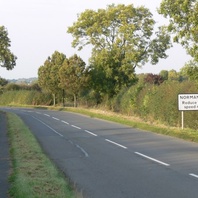
Viking Names
Normanton
Normanton, in the Framland Hundred of Leicestershire, takes its name from the Old English ethnonym Norðman ‘Northman, Norwegian’ and the Old English element tun ‘farm, settlement’. There are several places of this name, predominantly in the East Midlands: five in Nottinghamshire, and some in Derbyshire, Leicestershire, Lincolnshire and Rutland, and one in the West Riding of Yorkshire. The settlement lies in the Vale of Belvoir and previously had the affix in le Vale. Traditionally, the place-name has been interpreted as referring to a settlement of Norwegians (in an area where most of the Scandinavian settlers were Danes). However, the exact implications of such a name are not yet fully understood and are the subject of ongoing work by Dr Jayne Carroll of the Institute for Name-Studies, University of Nottingham.
Read More
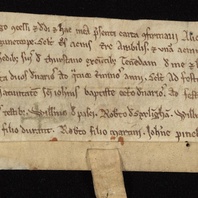
Collection
Viking Names
Place-names On these pages you can find out about the names the Vikings gave to the places in which they settled down in the East Midlands. As commonly throughout England, most place-names referring to settlements consist of two elements. The second element is called the ‘generic’ and refers to the kind of place being named. The first element is the ‘specific’ which denotes a particular settlement of that kind. Most major place-names (of towns and villages) in England were given in the Old English language. In areas settled by Vikings, such as the East Midlands, we can also see how their language was used to coin names. These are sometimes wholly in Old Norse, and sometimes they are in a mixture of Old Norse and Old English, suggesting interaction between the incomers and the locals. Typical Old Norse generics recognisable in the modern forms of the names are -by, denoting a farm or settlement, and -thorpe, denoting an outlying settlement of some type. Nowadays, these mostly refer to villages, but some of these have grown into sizeable towns, such as Grimsby in Lincolnshire. Also typical of some of the East Midlands is that the early medieval administrative divisions are called ‘wapentakes’, from the Old Norse vápnatak ‘taking of weapons’. This term may refer to the brandishing of weapons as a sign of assent at a legal assembly. Elsewhere in England (and in Derbyshire and Leicestershire) these divisions are known by the English term ‘hundred’. Our virtual museum has only a selection (though a growing one) of relevant place-names. We have focused on place-names that include Old Norse elements, but have also included some purely Old English names where these are locations for significant Viking Age finds. For a quick and easy guide to the most likely interpretations of all major names in England, please visit the Key to English Place-Names. Personal names Many Viking place-names contain personal names as their first element. In Gunthorpe, Nottinghamshire, for example, the first element is the female name Gunnhildr. Although we don’t know for sure, we assume that this kind of name means that the settlement once belonged to a woman who gave her name to it. An interesting group of names in Nottinghamshire are where a Scandinavian personal name is combined with the English generic -ton (one of the most common place-name generics across England, which also refers to a settlement). Examples in the Trent Valley include Gonalston, named after Gunnolf, or Rolleston, named after Hroaldr. Interestingly, Rolleston in Leicestershire, though apparently identical, seems to have been named after Hrolfr (or possibly the cognate English name Hrothwulf). The only way of distinguishing between the two is to examine the earliest spellings of these names. Compare the spelling of the Leicestershire Rolleston as Roveston in 1086 and Rolveston in 1156 with that of the Nottinghamshire one as Roldeston in 1086. This is the kind of work done by the English Place-Name Survey based at the University of Nottingham. Also in this collection you can find out more about Old Norse personal names. We have included many personal names taken from the place-names of the East Midlands. Unfortunately, Gunnhildr is a rarity and these do not include many female names. For the female names, then, we have looked at other sources, particularly from the neighbouring county of Yorkshire, to give an idea of the kinds of names being used at the time. For each individual name you will be given an anglicised form (adjusted to the spelling of modern English) and an Old Norse form. Each name will also be given in one or more runic alphabets, and will be linked to appropriate place-names where relevant. Header image: Mi D 529 (c) University of Nottingham Manuscripts and Special Collections, used with permission
Read More

Viking Talks
Invasion, Immigration, Integration – or Diaspora? New Ways of Looking at the Viking Phenomenon
Find out about some new ways of looking at the Viking phenomenon. Professor Judith Jesch Friday 5 January 2018
Read More
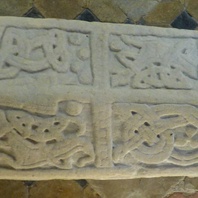
Blog Post
Labels and Identities in the Viking Age East Midlands I: Place and Time
Detail of an Anglo-Scandinavian grave cover from Hickling, Nottinghamshire This website explores a period in the history of the islands of Britain and Ireland which was characterised by contact with, incursions by, and then the settlement of, groups of people whose origins were ultimately in what are today the Scandinavian countries of Denmark, Norway and Sweden. We delight in showing some of the objects that these immigrants brought with them, as well as objects which were made here but to their taste or showing their influence on style and function. Other objects help us to track the places they visited and settled in, as does the less tangible evidence of language. The speech of the incomers is reflected in a wide range of names of the places the incomers settled in and which they named or renamed, or the personal names of individuals which are sometimes incorporated into those place-names. Some of this speech also survives in the present-day English language. All of this evidence not only records this early medieval episode of immigration, but most of it also demonstrates the ultimate integration of the incomers into the local community and in many cases the development of a hybrid culture. Yet other evidence in the form of stories and poems shows how communities of later periods looked back on this time which was no doubt fraught with both anxiety about change and excitement about new opportunities. Defining these groups and communities, and thus the subject of this website, is in many ways tricky, but the attempt to do so can be very illuminating. Finding the right words to explain and explore these topics is in itself a part of the process of understanding the evidence and working out what was happening back then. These words and definitions may involve some terms that were known and used at the time, but most of the terms we use were devised in more recent times as part of this process of understanding. Some of the terms are quite vague and therefore inclusive but not very precise, others are more precise but could be wrong, as there is still much we do not know. This blog attempts to set out what we mean by the terms that we use on this website, while recognising that all of them could be defined somewhat differently, or that in some cases alternative terms might be better. East Midlands Our definition of the East Midlands is not exactly that as used in 21st-century Britain, but is rather based on the concept of the Five Boroughs. This was an area under the political control of the incomers as recorded in an Old English poem concerning events in 942, which names the Five Boroughs as Derby, Leicester, Lincoln, Nottingham and Stamford. Four of these later became the county towns of the historical counties of Derbyshire, Leicestershire, Lincolnshire and Nottinghamshire, which emerged as administrative divisions in the medieval period. This website is largely focused on these four counties, though with occasional glances both to neighbouring counties and to places further afield. Some county boundaries were reorganised in more modern times and we try to indicate this where relevant to help our readers orient themselves. Danelaw Map showing the line of Watling Street delineating the Danelaw However we define the East Midlands, they are a part of an area known to scholars as the Danelaw, though what exactly they mean by it varies quite a lot. This term has been discussed in a separate blog post. It is used here in the general sense of ‘that part of England which was influenced by the activities of Scandinavians, whether they were the so-called ‘Great Heathen Army’ of the ninth century or peaceful settlers in the tenth’. The nature and extent of this ‘influence’ varied and that is precisely one of the things we explore in this virtual museum and our blogs. Viking Age Our chronological focus is on what we call the Viking Age, a period defined by the impact of the migrations of people of Scandinavian origin to other parts of the world. Scholars disagree over the exact dates to assign to this period, not least because there is variation in the evidence for this impact both chronologically and geographically. It seems easiest to operate with an inclusive date range and there is some consensus for a generous definition of the Viking Age as 750-1100. Since the events of the Viking Age had in some cases long-lasting ramifications, some scholars also operate with a concept of the ‘long, broad Viking Age’ which extends until about 1500. This is useful when considering high medieval evidence such as the Icelandic sagas, or an English poem such as Havelok the Dane, which shed light on the Viking Age, even though they were composed in a later period. Such cultural phenomena reflect what some have called the ‘Viking diaspora’, a term which helps to explain the world created by the migrations of the Viking Age proper. The concept of diaspora draws attention to the continuing connections migrants have with their homelands and with migrants of the same origin in other regions, as well as their interactions with the peoples they encountered when migrating. This will be explained in more detail in a future blog post. This blog post has outlined the times and places this website is mainly concerned with. A second blog post looks more closely at how we identify groups of people who lived in those times and places.
Read More
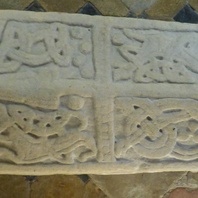
Viking Objects
The Hickling Hogback
The Hickling hogback is a type of Anglo-Scandinavian grave cover in St Luke’s Church, Hickling, Nottinghamshire. It is the most southerly grave cover of this type in England. It appears to have been carved from the remains of a Roman column, hence the notch in the end of it. The stone features Scandinavian Jelling-style decoration indicating an expression of Scandinavian identity and muzzled bears on each end which are thought to be indicators of a pagan identity. However, the stone also features a large cross showing that the commissioners of the carving had a strong interest in expressing the Christian identity of the deceased. As such, this stone is designed to show that the person buried under it was a Christian Scandinavian.
Read More
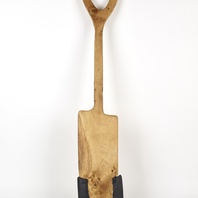
Viking Objects
Reproduction Spade
Spades would have had metal shoes to aid with cutting the ground when digging.
Read More
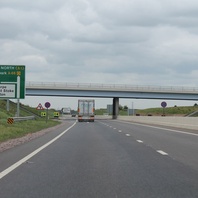
Viking Names
Elston
Elston, in the Newark Wapentake of Nottinghamshire, comes from the Old Norse male personal name Eiláfr or perhaps Eilífr and Old English tun ‘farm, settlement’. It is thus a hybrid name.
Read More
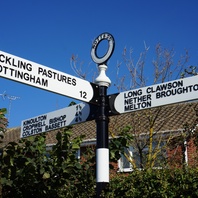
Viking Names
Hickling
Hickling, in the Bingham Wapentake of Nottinghamshire, has a name that was given probably quite early in Anglo-Saxon times in Old English. It is also recorded relatively early, first in a 14th-century copy of a document originally written around 1000. The -ing suffix indicates that the name refers to a group of people, who belonged to or were named after a person called Hicel(a). It is therefore not a Viking name. However, it is included here because St Luke’s Church in Hickling is the location of an early medieval grave-cover that is often regarded as a ‘hogback’ a type of Anglo-Scandinavian monument generally found further north (indeed this would be the most southerly example). It is quite common for sculpture with Scandinavian features or showing Scandinavian influence to be found in villages with English names, and this applies to other forms of material culture too. There is therefore no automatic connection between the name of a place and other evidence for Scandinavian influence, and this raises many interesting questions about the processes of acculturation, integration and diaspora that resulted from the Viking invasions.
Read More
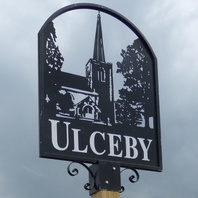
Viking Names
Ulceby
Ulceby, in the Yarborough Wapentake of Lincolnshire, is a Scandinavian compound from the Old Norse male personal name Ulfr and by ‘farm, settlement’. It is noteworthy that the first element has a Scandinavian genitive (a case that indicates relationships or ownership), as in the identical name Ulceby with Fordington and other place-names in Lincolnshire like Braceby, Haceby, Laceby, Rauceby and Winceby, and this survives today.
Read More
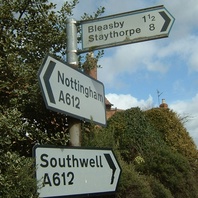
Viking Names
Bleasby
Bleasby, in the Thurgarton Wapentake of Nottinghamshire, was originally Blisetun, probably from the Old Norse male personal name Blesi and the Old English element tun ‘farm, settlement’. It was thus originally a hybrid name, like several others near it, such as Gonalston. By the thirteenth century, the second element had been replaced by Old Norse by ‘farm, settlement’.
Read More
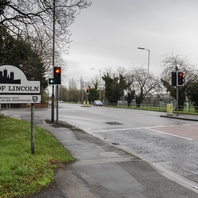
Viking Names
Lincoln
Lincoln is one of the Five Boroughs of the Danelaw. The original name is derived from pre-English lindo, pre-Welsh linn ‘a pool’, which likely refers to the broad pool in the River Witham, now known as Brayford. The pre-English form of Latin colonia was added after the establishment here of a settlement of legionaries in succession to the earlier fortress.
